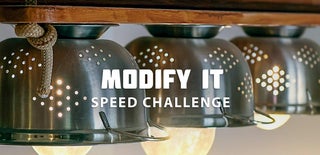Introduction: Archery Quiver / Transport Quiver
Building an archery quiver / transport quiver from a HT - Pipe.
Materials needed:
- HT - Pipe DN 110, f.e. this: https://www.amazon.de/HT-Rohr-Abwasserrohr-Passl%...
- HT - Pipe end lid, f.e. this: https://www.amazon.de/HT-Rohr-Abwasserrohr-Passl%...
- Some duct tape - a strap, f.e. this one: https://www.amazon.de/HT-Rohr-Abwasserrohr-Passl%...
- a buckle, f.e. this one: https://www.amazon.de/HT-Rohr-Abwasserrohr-Passl%...
- some soft material like foamed plastics
- some material for the handle of the lid. I used 4 mm twisted / plaitet cord.
Supplies
Step 1: Tools Needed
Tools needed:
- a saw, handsaw or dremel will be fine
- sanding paper (120 grain and 240 grain if you wand it really smooth)
- needle and yarn to sew the strap
- maybe a cutter / blade
Step 2: Cut the HT - Pipe
Cut the HT - Pipe to the needed length using a cutter on the Dremel or using a handsaw.
If you use a Dremel wear eye protection because warm/molten material will fly around.
I use a 1 meter HT - pip cut down to 82 centimeter which works fine for 32" arrows.
Step 3: Sand the Rough Edges
Sand the the rough edges of the cut.
Do not use the Dremel for this, because it will melt the material.
Step 4: Cut the Slits for the Strap
Cut the slits with the saw for the straps according to your straps. It's adviceable to make the a bit wider than your strap to reduce friction. You need two slits on the top and two on the bottom. The slits should be about 2-3 centimeters apart - depending on your used strap.
You can use a cutter to clean up the cut before sanding to save a bit of sanding time.
With the placement of the upper and lower slit you can control how the quiver behaves. If you place the upper slits more to the edge the quiver will barely show over the shoulder. If you place it bit away from the upper edge the quiver will show over your shoulder, but will be less prone to bang into something wih the lower end.
Step 5: Sand the Slits.
Sand the rough edges of the slits. Again: no Dremel.
Step 6:
Put the strap through the slits and sew one end together and sew the other end to the buckle. For me 1,9 meters of strap works fine. But I am a tall guy, so the length of the strap may differ for you.
Step 7: Soften the Lower Lid
Glue the foamed/soft material on to the inside of the HT - lid to soften it up a bit. Also two layers of duct tape might do the trick. Be creative and try to recycle something that might otherwise go to the dumpster.
Step 8: Put the HT - Lid Into the Muffle
Force the lid into the muffle.
Once in the muffle, it is extremly difficult to remove the lid again. So think twice before inserting it into the muffle that you are really done with sanding the slits.
Step 9: 3D Print the Lid Provided
3D Print the STL provided.
You can also use the ScetchUp file to customize it to your needs
Alternativly if you have no 3D-Printer you can build something from cardboard or just put a plastic bag over the opening fastening it with a rubber band.
Step 10: Use Duct Tape to Fit the Lid
Put some duct tape to the printed lid.
Use more for the lid to fit in more firmly, use less for a more lose fit. Four pieces like on the picture around the lid give an very good fitting.
Step 11: The Grip of the Printed Lid
For the handle of the lid I used 4mm plaited / twisted cord.Feel free to experiment. You can use the provided SketchUp file to include a handle or something to the model or you can screw a drawer handle to the lid.
Step 12: Optional
You can paint the pipe and lid using acrylics or give it your personal touch as you like. Be creative! :-)
For Example my son used an old Coffee Sack and glues it around the pipe with double sided duct take and sew it together.

Participated in the
Modify It Speed Challenge









